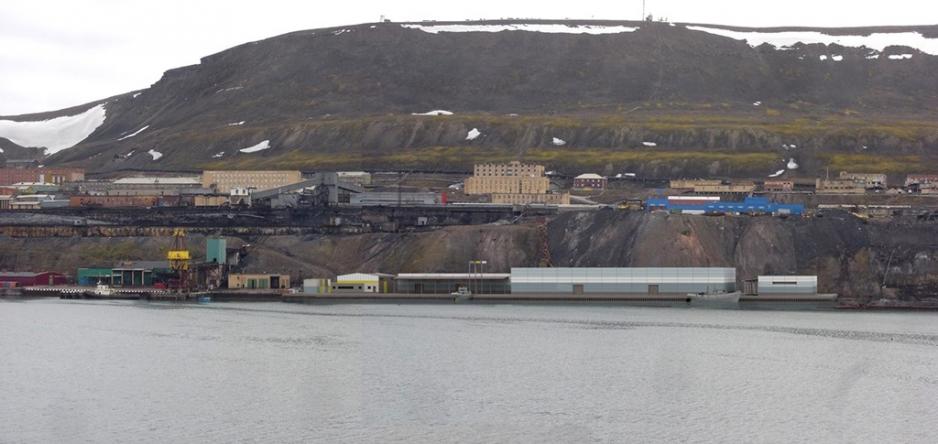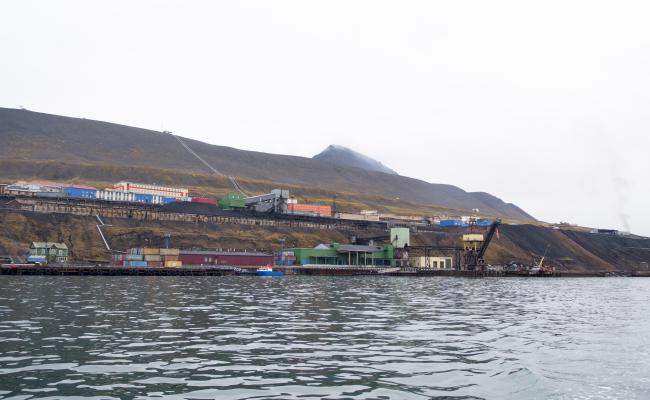Researching Fish Landing Facilities in Svalbard: “Raises A Series of Questions on Different Levels”
Geir Hønneland of the High North Centre for Business and Governance (NOS) and the Fridtjof Nansen Institute (FNI) chairs the “Svalfish” research project, which researches the opportunities and challenges related to fisheries and the establishment of fish-landing facilities in Svalbard. Senior Researcher Andreas Østhagen, also from NOS and FNI, is part of the team. Both here pictured at the “Arctic Connections” conference in Rome in 2019. (Photo: Trine Jonassen, High North News)
A group of researchers are researching the opportunities and challenges related to fish-landing facilities in Svalbard. Foreign policy also matters in this context.
“This is academically very exciting for us, because even such a potentially small thing as a fish-landing plant raises so many political questions on different levels”, Geir Hønneland says to High North News.
The chairs the Svalfish research project, which researches the opportunities and challenges related to fisheries and the establishment of fish-landing facilities in Svalbard.

This is where Arctic Resource Norge AS envisions the location of a fish-landing facility in Barentsburg. (Illustration: Arctic Resource Norge)
High North News has previously written about Russia-owned Arctic Resource Norge [Norway] AS’ wanting to establish fish and or crab landing facilities in BArentsburg. The company is currently working on regulating the area plan for the Russian settlement and also on creating a plan for impact assessment.
“The plans about fish-landing facilities in Barentsburg have popped up regularly for the past 20-30 years, but nothing ever came from it”, says Professor Geir Hønneland at the High North Centre for Business and Governance at Nord University. He adds that that does not necessarily mean that it will not come to fruition this time around.
Foreign policy
One of the challenges related to the establishing of fish-landing facilities in Svalbard is foreign policy. The Svalbard Treaty says that companies from all treaty signatory countries may run business activities in Svalbard on par with each other.
“Officially, Norwegian authorities will say that they welcome natural activities in Svalbard. However, Norway would probably prefer that no more foreign business than necessary is established on the archipelago”, Hønneland says.
The Professor adds that this is an issue in Longyearbyen too, where the relative share of foreigners is increasing.
Also read
Delivers straight to Europe
As for the Barentsburg fish-landing facility, Hønneland also points out that a precondition would be for fishing vessels and shipowners to actually want to land their fish in Barentsburg. The fish fleet is not subject to instruction, neither from Russian authorities nor from business in Svalbard.
Today, the Russian fishing fleet has well-incorporated landing routes with transport vessels at sea delivering fish straight to the European market. Despite a series of incentives from Russian authorities aiming to have fish landed in Russia, most of them chose to land it abroad.
Mapping Longyearbyen
The Svalfish project commenced under the auspices of the Fridtjof Nansen Institute in January this year, looking into the opportunities for a fish-landing facility in Svalbard, mainly in Longyearbyen. The project runs until 2022. It contains three sections.
Part one is investigating the resource foundation; finding out where the fish actually is and how much of it that is caught in the Svalbard zone. Based on that, the researchers can identify who would be interested in a fish-landing facility and why. Whether or not it will be economically viable is not yet clear.
Furthermore, the researchers will look at the regulations; at what it takes to receive permission to construct and operate a landing facility.
Norway would probably prefer that no more foreign business than necessary is established on the archipelago
Senior Researcher Andreas Østhagen from FNI and NOS is also working on the project. He was in Longyearbyen earlier this autumn.
“We also look at what would benefit Longyearbyen as a community. Why would you want a landing facility or not. We have not yet concluded”, Østhagen says.
The overall picture is complex and not everyone he has spoken with believe a landing facility is the way to go.
“Perhaps there will not be a large-scale landing facility for export, but rather a small-scale one for local use or production of special products to be sold in tourist shops. We are trying to map this now”, Østhagen says to High North News.
Fisheries as test case
The final section is looking at what would benefit Norwegian authorities. The researchers are using fisheries as a test case to find out what would be the function of Svalbard and Longyearbyen.
“One cannot be sure that the authorities want more people to live in Longyearbyen than the number currently there. If the population were to increase, it raises a series of questions related to welfer offers, tax policies and population mix. All this is related to Svalbard’s role in international politics”, Østhagen says.
Issues related to fisheries zones and the Norwegian shelf may also become relevant.
“Svalbard is the centerpiece of an area that has grown increasingly geopolitically tense in the past decade and is likely to remain that”, the senior researcher says.
What then, when a company in Barentsburg pioneers the establishing of a landing facility?
“The fact that Barentsburg is ahead of Longyearbyen perhaps goes to emphasize the sensitivity. Increasing the Russian population in Svalbard is probably not on the top of the list for Norwegian authorities. I am curious to see if they can get anywhere”, Østhagen responds.
This article was originally published in Norwegian and has been translated by HNN's Elisabeth Bergquist.



